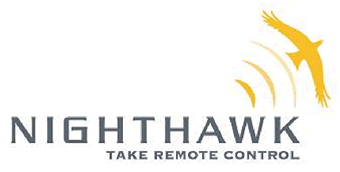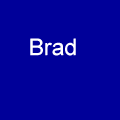BloostonLaw Telecom Update Published by the Law Offices of Blooston, Mordkofsky, Dickens, Duffy & Prendergast, LLP [Selected portions reproduced here with the firm's permission.] www.bloostonlaw.com | Vol. 10, No. 42 | November 7, 2007 |
FCC Seeks Comment On Applying 800 MHz Rebanding Plan To Canadian Border Area The FCC has asked for comment on proposals for establishing a reconfigured 800 MHz band plan in the U.S.-Canada border region in order to accomplish the Commission’s goals for band reconfiguration. The U.S. and Canada currently operate along the common border in the 800 MHz band pursuant to a bilateral agreement (Arrangement F) that distributes primary spectrum in the U.S. – Canada border region between the two countries. Comments in this WT Docket No. 02-55 proceeding are due December 3, and replies are due December 18. Under Arrangement F, the border region extends 140 kilometers from the border on either side, and is divided into eight geographic regions. In four of the regions (Regions 1, 4, 5, 6), the U.S. and Canada divide the 800 MHz band evenly. In two other regions, the spectrum is divided unevenly: in Region 2 (Buffalo/Toronto), the U.S. has 30 percent of the channels and Canada has 70 percent, while in Region 3 (Detroit/Windsor) the U.S. has 70 to 85 percent of the channels and Canada has 15 to 30 percent, depending on the band segment. The remaining two regions (Regions 7 and 8) are “buffer zones” starting at 100 kilometers from the border and extending to 140 kilometers from the border. In these regions, both countries have access to 100 percent of the channels on a primary basis, subject to power and antenna height limits designed to limit signal strength at the border. In the July 2004 800 MHz Report and Order, the Commission reconfigured the 800 MHz band to eliminate interference to public safety and other land mobile communication systems operating in the band. However, the Commission deferred consideration of band reconfiguration plans for the border areas, noting that “implementing the band plan in areas of the United States bordering Mexico and Canada will require modifications to international agreements for use of the 800 MHz band in the border areas.” The Commission stated that “the details of the border plans will be determined in our ongoing discussions with the Mexican and Canadian governments.” The Commission also noted that international negotiations could cause rebanding in the border regions to take longer than the 36-month period established for rebanding in non-border regions. In the 800 MHz 2nd Memorandum Opinion and Order, adopted in May 2007, the Commission delegated authority to Public Safety and Homeland Security Bureau (PSHSB) to propose and adopt border area band plans once agreements are reached with Canada and Mexico. Specifically, the Commission noted that “once those discussions are completed, and any necessary modifications to our international agreements have been made, we will need to amend our rules to implement the agreements and identify the portions of the 800 MHz band that will be available to U.S. licensees on a primary basis. In addition, the FCC will need to adopt a band plan for the border regions that specifies the enhanced specialized mobile radio (ESMR) and non-ESMR portions of the band and the distribution of channels to public safety, Business and Industrial Land Transportation (B/ILT), and SMR licensees.” The FCC seeks comment on the following proposal for 800 MHz band reconfiguration in the eight U.S. – Canada border regions, and on potential alternatives. The FCC said its goal is to separate—to the greatest extent possible—public safety and other non-cellular licensees from licensees that employ cellular technology in the 800 MHz band. In all eight regions, the proposed band plan contains the following elements: - All relocating licensees will receive comparable spectrum assignments as defined in prior Commission orders in this proceeding.
- Non-public safety (B/ILT and SMR) systems in the lowest block of U.S. primary spectrum will relocate to spectrum higher in the band.
- National Public Safety Planning Advisory Committee (NPSPAC) systems will relocate from the top portion of the band to the lowest portion of the band, so that they are assigned channels that are also used for new NPSPAC operations in non-border areas.
- As in non-border areas, spectrum that is vacated by Sprint Nextel that is not required for relocation of incumbent licensees will be made exclusively available to public safety entities for three years after the completion of rebanding in each region, and to both public safety and critical infrastructure entities in the fourth and fifth years.
- To the extent feasible, existing non-NPSPAC public safety systems will remain in the lowest 800 MHz block, though some may have to retune to different channels within the block to accommodate relocation of NPSPAC systems. This may create technical issues because non-NPSPAC public safety systems operate on channels with 25 kHz spacing, while NPSPAC systems operate on 12.5 kHz spaced channels and are subject to tighter emission masks. We therefore seek comment on channelization alternatives for accommodating both NPSPAC and non-NPSPAC public safety systems in the same spectrum block. Are special technical rules needed to reduce the possibility of interference between non-NPSPAC and NPSPAC public safety licensees? Should the FCC permit NPSPAC licensees to operate on 12.5 kHz spaced channels if they satisfy the relevant emission mask requirements?
Mutual aid channels with 25 kHz spacing will be included in the new band plan to match the mutual aid channels in the non-border NPSPAC band plan. In addition, existing cross-border mutual aid channels in the former NPSPAC band that fall on U.S. primary spectrum will be maintained so that they can continue to be used for mutual aid on the Canadian side of the border. These channels will be kept clear and protected from ESMR operations in the border regions. In the upper portion of the band, the FCC seeks to separate non-ESMR systems (high-site B/ILT and SMR) from ESMR systems to the extent feasible. However, due to the limited amount of U.S. primary spectrum available in the border regions, some interleaving of ESMR and non-ESMR systems may be necessary to provide non-ESMR systems with sufficient internal spacing of their channels to enable them to make effective use of combiners. The FCC seeks comment on the degree to which the border area band plan should accommodate such interleaving. We also seek comment on whether other technical rules are required to mitigate potential interference between ESMR and non-ESMR systems. The dividing line between Regions 2 and 3 will align with the Pennsylvania-Ohio border (at 80° 30’ WL) as defined in the 1990 Arrangement between the U.S. and Canada covering NPSPAC operations in the 800 MHz band. The FCC also seeks comment on various region-specific elements of the proposed band plan. And it seeks comment on the following issues: - Some U.S. NPSPAC licensees in the border regions operate on a secondary basis on Canadian primary channels in the 821-824/866-869 MHz band. How should the FCC accommodate relocation of these operations? Given the limited amount of U.S. primary spectrum available in some regions, it may be difficult to relocate these secondary operations to U.S. primary channels. Alternatively, should these operations be relocated to the lowest available Canadian primary channels in the band, where they would continue to have secondary status but would be more closely aligned with the new U.S. NPSPAC channels?
- Sprint currently operates in the border region on certain Canadian primary channels below 817/862 MHz pursuant to a Special Coordination Procedure (SCP) signed in October 2001. In non-border regions, however, Sprint is required to vacate all spectrum below 817/862 MHz as part of rebanding. Should Sprint similarly be required to clear its operations in the Canadian border region on SCP channels below 817/862 MHz? If Sprint is allowed to continue operating on SCP channels in the border region, what if any conditions should be placed on such operations to protect U.S. licensees operating on these channels in non-border areas?
The FCC also seeks comment on the sequence and timing of rebanding activity in the Canadian border region once a final band plan is adopted and the 800 MHz Transition Administrator issues rebanding channel assignments to border area licensees. The Commission said that it intends to proceed with rebanding in the Canadian border region as quickly as is feasible consistent with its goals in this proceeding, and to minimize any delay between rebanding in non-border and border regions. It anticipates that rebanding in the border region will need to proceed in stages similar to Stage 1 and Stage 2 in non-border areas, i.e., a first stage consisting of clearing and relocation of lower-band incumbents from channels needed for NPSPAC relocation, and a second stage in which NPSPAC licensees relocate to their new channel assignments. The Commission seeks comment on this staged approach, the amount of time that should be allotted for each stage, and whether any adjustments to this approach are needed due to the unique disposition of 800 MHz licensees in the border areas. It also seeks comment on the sequence and timing of licensee planning activity and negotiations and mediation between border area licensees and Sprint. In general, the FCC proposes to establish expedited timelines for planning, negotiations, and mediation similar to those established in the Commission’s September 2007 Public Notice for non-border licensees. BloostonLaw contacts: Hal Mordkofsky, Gene Maliszewskyj, and Richard Rubino. FCC LOWERS DEFAULT PERCENTAGE FOR 700 MHz D BLOCK, PROVIDES FURTHER GUIDANCE ON HOW BUREAUS WILL EXERCISE AUTHORITY: The FCC’s Wireless Telecommunications Bureau (WTB) has announced a revised procedure for the upcoming auction(s) of licenses for services in the 700 MHz band scheduled to begin on January 24, 2008 (Auctions 73 and 76). Specifically, the WTB has set the additional default payment percentage at 10% for the D Block (“Private-Public Safety”) license. The additional default payment percentage amount for licenses in the A, B, and E Blocks remains at 15%, as previously announced. Also, the Chiefs of the Public Safety and Homeland Security Bureau and the WTB provide further guidance as to how they intend to exercise their delegated authority in the event that disputes arise with respect to the negotiation of the terms of the Network Sharing Agreement (NSA) between the D Block winner and public safety spectrum managers. Any winning bidder that defaults or is disqualified after the close of an auction is liable for a default payment under the Commission’s rules. This payment consists of a deficiency payment, equal to the difference between the amount of the bidder’s bid and the amount of the winning bid the next time a license covering the same spectrum is won in an auction, plus an additional payment equal to a percentage of the defaulter’s bid or of the subsequent winning bid, whichever is less. In the 700 MHz Auction Procedures Public Notice, the Bureau set the additional default payment percentage at 15% of the defaulted bid for all licenses in blocks that are not subject to package bidding, including the D Block. As discussed in the 700 MHz Auction Procedures Public Notice, the public interest costs of a default on the D Block are likely to be high given the role of the D Block in the establishment of a public/private partnership for the provision of public safety broadband services. At the same time, WTB recognizes that factors that may contribute to a default by a winning bidder for the D Block may be different in nature from those affecting winning bidders in other blocks. For example, the D Block winning bidder must negotiate and enter into a Commission-approved NSA with the new national Public Safety Broadband Licensee consistent with terms and procedures set forth in the 700 MHz Second Report and Order. Upon further review, WTB concluded that a slightly lower percentage should be used for the additional default payment in the case of the D-Block license. In the 700 MHz Second Report and Order, the Commission delegated to the Chiefs of the Public Safety and Homeland Security Bureau and the WTB the authority to take certain actions in the event of a dispute between the winning bidder for the D Block license and the Public Safety Broadband Licensee at the end of the six month negotiation period for the NSA, or on their own motion at any time. The Bureaus believe that it is in the public interest to provide potential bidders for the D Block license as well as the public safety community with further guidance as to how they intend to exercise their delegated authority in the event that disputes arise with respect to the negotiation of the terms of the NSA. As a result, they have determined that they will not exercise their authority for immediate denial of the long-form application filed by the winning bidder for the D Block license, as a result of any dispute over the negotiation of the terms of the NSA, until they take one of two steps: (1) issuing a decision on the disputed issues and requiring the submission of a draft agreement consistent with their decision; or (2) referring the issues to the Commission for an immediate decision and the Commission issues such a decision. BloostonLaw contacts: Hal Mordkofsky, John Prendergast, Richard Rubino, and Cary Mitchell. FCC SETS COMMENT CYCLE FOR EMERGENCY ALERT SYSTEM FNPRM: The FCC has established a comment cycle for its Further Notice of Proposed Rulemaking (FNPRM) to explore certain Emergency Alert System (EAS)-related issues adopted in conjunction with its July order adopting rules to help facilitate “next generation” national EAS and fulfill its responsibilities under the President’s Public Alert and Warning System Executive Order (BloostonLaw Telecom Update, July 18). Comments in this EB Docket No. 04-296 proceeding are due December 3, and replies are due December 17. In sum, the Commission said, the FNPRM will increase the reliability, security, and efficacy of the nation’s EAS network and will enable the President, the National Weather Service (NWS), and state officials to rapidly communicate with citizens in times of crisis, over multiple communications platforms. The FNPRM seeks comment on several issues to ensure that EAS rules better protect the life and property of all Americans. Recognizing the need of all Americans to be alerted in the event of an emergency, the Commission seeks comment from those whose primary language is not English, and persons with disabilities, to determine how these communities might best be served by EAS. The Commission also seeks comment on whether emergency alerts transmitted by local authorities should be sent over the EAS system, and various ways that performance of EAS operation may be assessed. BloostonLaw contacts: Hal Mordkofsky, Ben Dickens, and Gerry Duffy. FCC SEEKS COMMENT ON REQUESTS FOR STAY, WAIVER OF CERTAIN ASPECTS OF VoIP TRS ORDER: The FCC seeks comment on petitions filed by the Voice on the Net (VON) Coalition, the United States Telecom Association (USTelecom), and Hamilton Telephone Company (Hamilton) seeking a stay or waiver of certain aspects of the Commission's Voice Over Internet Protocol (VoIP) Telecommunications Relay Services (TRS) Order (VoIP TRS Order). In particular, the Commission seeks comment on technical solutions to the ability of interconnected VoIP providers to route all 711 calls to an appropriate relay center and to the ability of a relay center to identify the appropriate public safety answering point (PSAP) to call when receiving an emergency call via 711 abbreviated TRS dialing access and an interconnected VoIP service. The Commission expects that interested parties will work together to achieve technical solutions that will enable emergency 711 calls placed through interconnected VoIP providers to be handled in accordance with the Commission's emergency call handling procedures. Comments in this WC Docket No. 04-36 proceeding are due December 3, and replies are due December 17. BloostonLaw contacts: Ben Dickens, Gerry Duffy, and Mary Sisak. IS GOOGLE REALLY JUMPING INTO THE CELL PHONE MARKET?: If you read between the lines of the various press reports and scroll down to some of the paragraphs buried in the stories about Google entering the cell phone market, you find that: (1) Google does not plan to make cell phones; and (2) it does not plan to put its name on the devices equipped with its software. Instead, as the Washington Post reports, it will work with four manufacturers and 29 other companies that have formed the Open Handset Alliance to help launch Google's mobile software. For now, Google is focused on rallying support for Android, which relies on openly available computer code that gives equal access to all programmers. Alliance members include T-Mobile, Qualcomm, HTC, and Motorola. Google will release a tool kit for developers next week. Consumers will have to buy a new phone to get the Google software because Android was not designed for existing handsets. Because Android will be free, it could undercut rival operating systems that handset makers must buy. The smart phones it comes on also could be less expensive since manufacturers won't have to pay for software, and the costs of developing new applications may fall, too. With 3 billion cell phones already on the market, Google wants to ensure people can use its services, such as the search engine, e-mail and maps, on mobile handsets as easily as on personal computers. But major wireless carriers zealously control which services can be accessed in an effort to maximize their own profits. And this "walled garden" approach has purportedly lessened the incentive to connect to the Internet on cell phones. Nevertheless, FCC Chairman Kevin Martin released the following public statement in support of the Open Handset Alliance effort: “I was pleased to hear the announcement by the Open Handset Alliance of the plans to introduce an open platform for mobile devices. As I noted when we adopted open network rules for our upcoming spectrum auction, I continue to believe that more openness—at the network, device, or application level—helps foster innovation and enhances consumers’ freedom and choice in purchasing wireless service.” BloostonLaw contacts: Hal Mordkofsky, John Prendergast, and Cary Mitchell. FEBRUARY 1: FCC FORM 502, NUMBER UTILIZATION AND FORECAST REPORT: Any wireless or wireline carrier (including paging companies) that have received number blocks—including 100, 1,000, or 10,000 number blocks—from the North American Numbering Plan Administrator (NANPA), a Pooling Administrator, or from another carrier, must file Form 502 by February 1. Carriers porting numbers for the purpose of transferring an established customer’s service to another service provider must also report, but the carrier receiving numbers through porting does not. Resold services should also be treated like ported numbers, meaning the carrier transferring the resold service to another carrier is required to report those numbers but the carrier receiving such numbers should not report them. New this year is that reporting carriers are required to include their FCC Registration Number (FRN). Reporting carriers file utilization and forecast reports semiannually on or before February 1 for the preceding six-month reporting period ending December 31, and on or before August 1 for the preceding six-month reporting period ending June 30. BloostonLaw contacts: Ben Dickens and Gerry Duffy. |











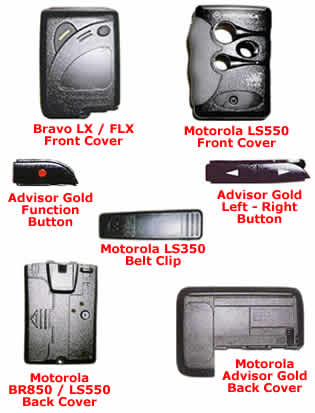

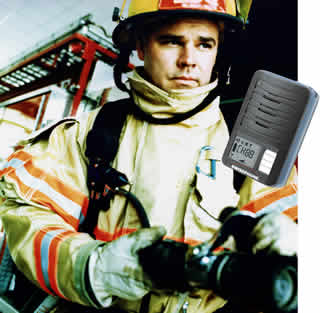
 Stopwatch
Stopwatch 
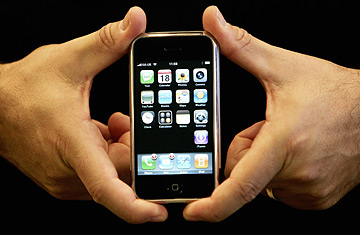



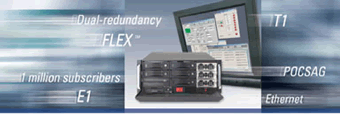


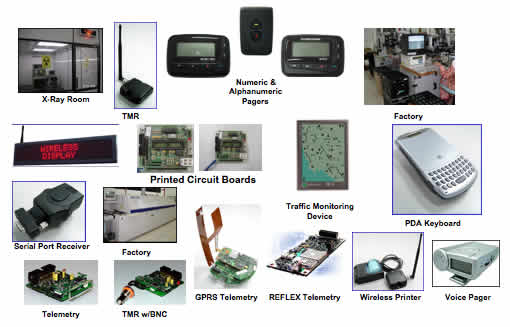

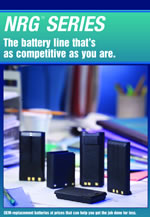




 ATM300
ATM300 











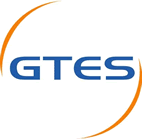
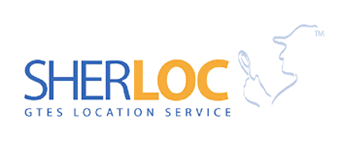
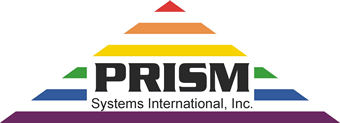

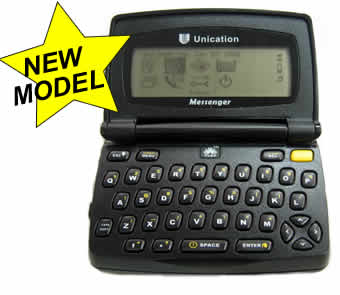








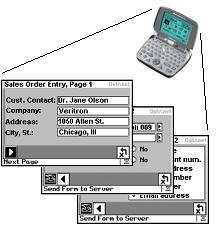 If you see someone in the field (like salespeople, technicians, and delivery people) using paper forms, their company could probably save a pile of money, and get much better timeliness, accuracy and efficiency, by using converting to Outr.Net's Wireless Forms. Custom applications for as little as $995, delivered in just a few days.Outr.Net has a web page on Wireless Forms for Timeports at:
If you see someone in the field (like salespeople, technicians, and delivery people) using paper forms, their company could probably save a pile of money, and get much better timeliness, accuracy and efficiency, by using converting to Outr.Net's Wireless Forms. Custom applications for as little as $995, delivered in just a few days.Outr.Net has a web page on Wireless Forms for Timeports at: 
